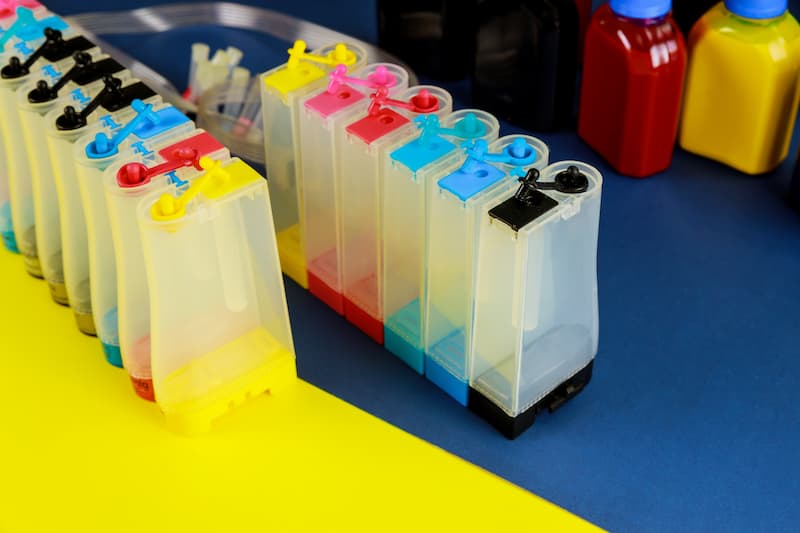Where Does Ink Come From? The Fascinating History of Ink and Cephalopod Ink Production
History of Ink and Cephalopod Ink Production
Ink has played a pivotal role in human history, evolving from rudimentary natural sources to the sophisticated inks used in modern printers and fountain pens. But where does ink come from, and how has it developed over the centuries? Historically, ink would have been made from natural sources like plants and minerals, while modern inks often rely on petroleum-based chemicals and synthetic dyes.
Understanding the component of ink is key to grasping its evolution. Early inks were made from simple organic materials, but today’s inks, whether for printing or writing, include a wide range of chemical compounds. For example, fountain pen ink may contain dyes, solvents, and additives to ensure smooth flow and quick drying. Similarly, printer ink may include pigments, solvents, and stabilizers derived from petroleum to enhance performance for various applications.
Examining how cephalopods produce ink also gives insight into natural ink production, while modern ink manufacturing reveals the intricate processes used to meet the demands of today’s industries.

Where Does Ink Come From? The History of Ink From Ancient Civilizations to Modern Day
Ink has been a fundamental tool for communication since the dawn of written history. Its earliest forms were made from natural elements and substances that were readily available to ancient civilizations. As human societies developed, so did ink, evolving into the varied forms we use today, including printer ink and ink for writing.
The Origins of Ink: The Ancient World
The history of ink begins as early as 4th century BC, where the Egyptians, Greeks, and Chinese used various natural materials to create inks for writing on papyrus, wood, and other surfaces. In ancient Egypt, soot and other plant-based substances were mixed with water and resin to form a rudimentary type of black ink. The Greeks and Romans followed suit, using lampblack, a carbon-based substance created by collecting soot, to make their ink. In China, inksticks made from soot and animal glue were ground into a paste, which could be mixed with water to create ink. These ancient inks were durable and well-suited for their time.
Johannes Gutenberg and the Printing Revolution
The invention of the printing press by Johannes Gutenberg in the 15th century revolutionized ink production. Gutenberg’s printing ink was oil-based, unlike the water-based inks used for writing. This type of ink was better suited for mass production of books and newspapers, marking the beginning of modern printing. His ink combined soot, oil, and varnish, creating a durable, long-lasting substance that could adhere to metal typefaces.
This innovation transformed communication across Europe, enabling the rapid spread of knowledge. Printing ink has since evolved, but Gutenberg’s contribution remains foundational to the production of modern printer ink.
Iron Gall Ink: A Dominant Force in History
One of the most prominent inks in historical documents is iron gall ink, used extensively from the Middle Ages to the 19th century. Iron gall ink is made from tannin, a substance extracted from oak gallnuts, combined with iron salts. This ink was known for its permanence, as it adhered strongly to paper, becoming more permanent over time. However, its corrosive nature meant that it sometimes damaged the paper it was written on, leading to the degradation of many historical documents.
India Ink: The Timeless Ink
India ink, another ancient form of ink, was originally made from carbon black, a type of soot produced by burning oil or tar. Its deep black color and smooth flow made it popular for calligraphy and artistic purposes, particularly in China and India. India ink’s recipe has changed little over the centuries, and it remains a staple for artists and writers today.
Modern Ink Production: From Fountain Pens to Printers

Ink production has come a long way since the days of iron gall and India ink. Today, ink is a complex chemical product designed for specific applications, whether for writing, printing, or drawing. The two main types of modern ink are dye-based and pigment-based, each offering different properties for different uses.
The Components of Modern Ink
Modern inks are composed of several key ingredients, including a colorant (either a dye or pigment), a binder (such as resin), solvents, and various additives that control the ink’s behavior. The colorant gives the ink its color, while the binder holds the pigment particles together and helps the ink adhere to the surface. Solvents control the ink’s viscosity, making it flow more easily or dry more quickly, depending on the application.
For example, printer inks are carefully formulated to prevent smudging and ensure that the ink dries quickly when printed on a sheet of paper. Additives such as surfactants are included to ensure smooth ink flow, while preservatives are added to extend the ink’s shelf life.
Cephalopods: Nature’s Ink Producers
One of the most fascinating natural sources of ink comes from cephalopods, such as squids, octopuses, and cuttlefish. These marine animals have evolved to produce ink as a defense mechanism, using it to escape from predators in their underwater environment.
The Science of Cephalopod Ink
Cephalopods produce ink in a specialized gland called the ink gland, which is located near the animal’s ink sac. The ink itself is made of melanin, the same pigment that gives color to human skin and hair. When threatened, cephalopods release a cloud of ink to create a visual smokescreen, allowing them to escape.
The ink of these animals is not just a simple black substance. It contains various chemicals, including free amino acids, which may have evolved to further confuse predators by interfering with their sense of smell. Some species, like the blue-ringed octopus, can produce particularly toxic ink as part of their defense strategy.
Squids, Cuttlefish, and Octopuses: Masters of Ink Production
Different cephalopods produce ink with varying properties. Squids, for example, are known for their ability to release large amounts of ink in a short time, creating an effective cloud that allows them to escape from fast-moving predators. The Caribbean reef squid is a notable example, releasing ink in a controlled burst that spreads out into the water, confusing its predators.
Cuttlefish, another type of cephalopod, produce a more viscous type of ink that is often used in culinary applications. Cuttlefish ink is a key ingredient in Mediterranean cuisine, used to flavor and color dishes like pasta and risotto.
Octopuses, particularly the blue-ringed octopus, are famous for their defensive ink release. These animals use their ink to create a smokescreen while they flee, and in some cases, the ink contains compounds that can impair a predator’s senses.
Cephalopod Ink in Human History
Cephalopod ink has been used by humans for thousands of years, particularly in the production of sepia ink. Sepia, derived from the ink of cuttlefish, was a popular medium for writing and drawing in ancient times. The ink was prized for its rich brown color and smooth application. Artists in the 18th and 19th centuries often used sepia ink for detailed sketches and drawings, and it continues to be used in art today.
FAQs About Ink and Its Origins
The history of ink is as diverse and complex as the many forms it has taken throughout human history. From the earliest inks made from natural materials to the complex chemical formulas of modern printer inks, ink has remained a crucial part of communication and art. Even in the natural world, cephalopods have evolved to produce ink as a defense mechanism, demonstrating the remarkable versatility of this substance. Understanding where ink comes from not only connects us to our past but also highlights the scientific and creative innovations that continue to shape its future.
For more information and services you can contact us for a free quote and estimation.
- Address: 165 Veterans Way, Warminster, PA 18974
- Email: sales@aispa.us
- Call Us: (215) 999-8445












